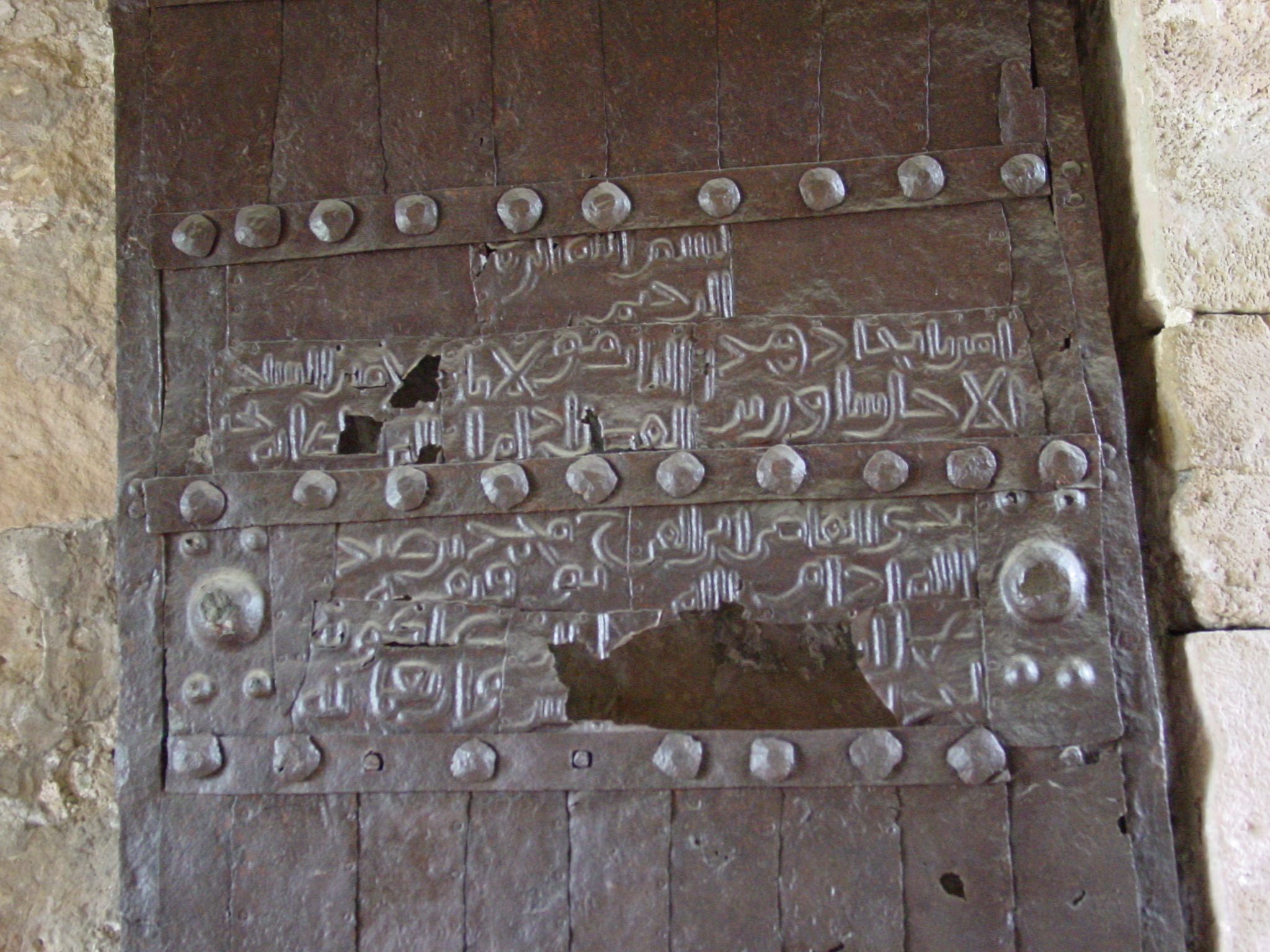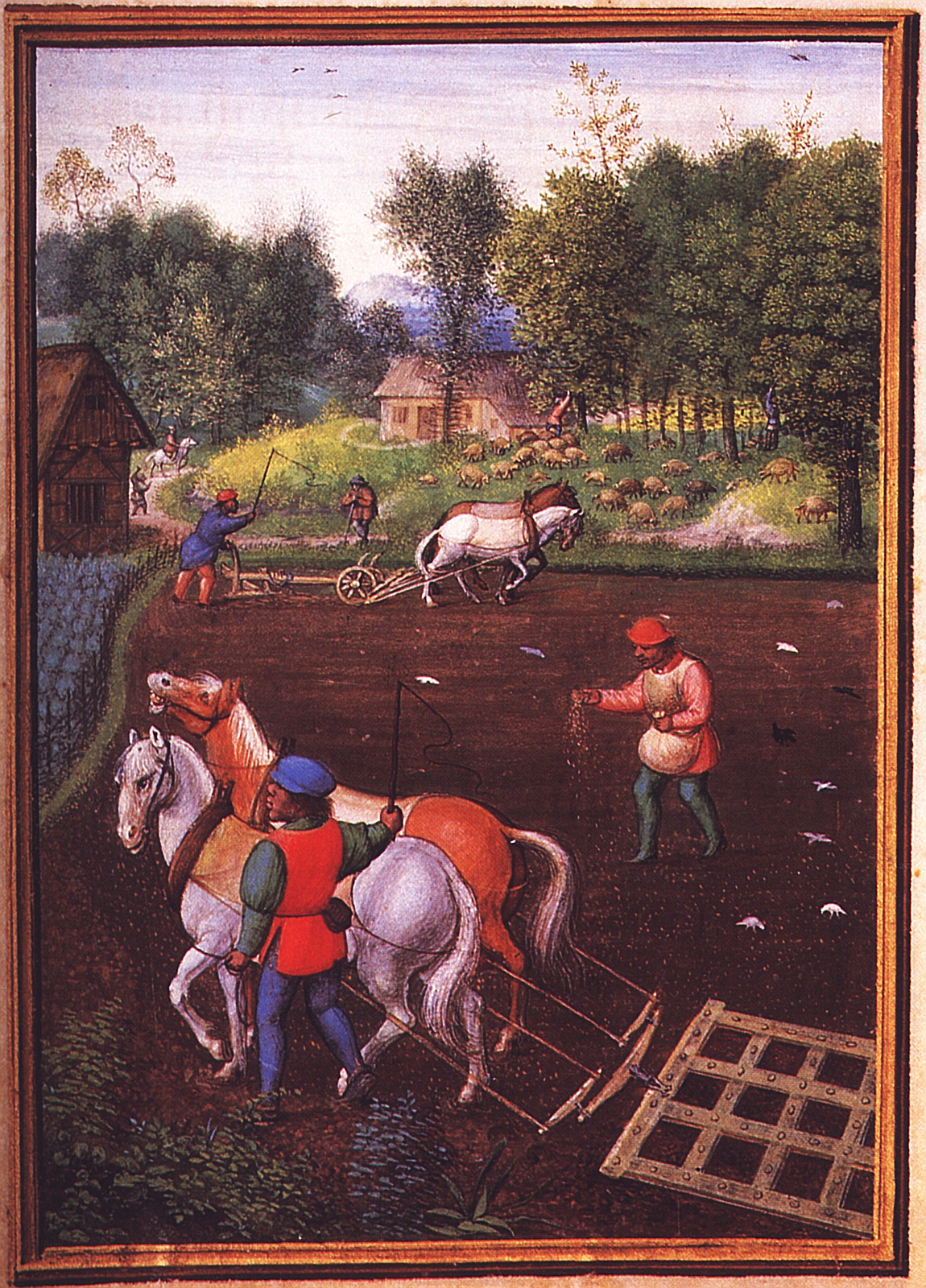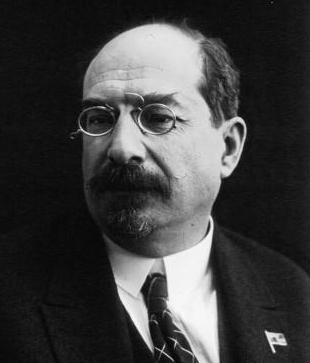|
Faig Mammadov
Faig Ismail oglu Mammadov (, ; November 27, 1929August 4, 1987) was an Azerbaijani agronomist specializing in cottonseed. He taught agricultural sciences at Azerbaijan State Agricultural University and worked in the State Land Commissariat. Early life and education Faig Ismail oglu Mammadov was born in Kirovabad, Azerbaijan Soviet Socialist Republic on November 27, 1929. After finishing secondary school, he studied fruit and vegetable growing and viticulture at Azerbaijan State Agricultural University (ASAU), where he graduated with honours in 1951. He continued onto his Master's course at ASAU and wrote his dissertation under N. I. Malov. He finished in 1954 and was awarded a degree of Candidate of Agricultural Sciences by the Supreme Attestation Commission under the USSR Ministry of Higher Education in 1957. He was a doctoral candidate at Moscow Timiryazev Agricultural Academy in 1964-1966. He was awarded a doctorate in agricultural studies by the Supreme Attestation Commis ... [...More Info...] [...Related Items...] OR: [Wikipedia] [Google] [Baidu] |
Ganja, Azerbaijan
Ganja (; ) is Azerbaijan's List of cities in Azerbaijan, third largest city, with a population of around 335,600.Azərbaycan Respublikası. — 2. Azərbaycan Respublikasının iqtisadi və inzibati rayonları. — 2.4. Azərbaycan Respublikasının iqtisadi və inzibati rayonlarının ərazisi, əhalisinin sayı və sıxlığı, səhifə 66. /Azərbaycanın əhalisi (statistik bülleten) Müəllifi: State Statistics Committee, Azərbaycan Respublikasının Dövlət Statistika Komitəsi. Buraxılışa məsul şəxs: Rza Allahverdiyev. Bakı — 2015, 134 səhifə. The city has been a historic and cultural center throughout most of its existence. It was the capital of the Ganja Khanate until 1804; after Qajar Iran ceded it to the Russian Empire following the Treaty of Gulistan in 1813, it became part of the administrative divisions of the Georgia Governorate, Georgia-Imeretia Governorate, Tiflis Governorate, and Elizavetpol Governorate. Following the dissolution of the Russian Emp ... [...More Info...] [...Related Items...] OR: [Wikipedia] [Google] [Baidu] |
Rector (academia)
A rector (Latin language, Latin for 'ruler') is a senior official in an educational institution, and can refer to an official in either a university or a secondary school. Outside the English-speaking world, the rector is often the most senior official in a university, while in the United States, the equivalent is often referred to as the President (education), president, and in the United Kingdom and Commonwealth of Nations, the equivalent is the Vice-chancellor (education), vice-chancellor. The term and office of a rector can be referred to as a rectorate. The title is used widely in universities in EuropeEuropean nations where the word ''rector'' or a cognate thereof (''rektor'', ''recteur'', etc.) is used in referring to university administrators include Albania, Austria, Benelux, the Benelux, Bosnia and Herzegovina, Bulgaria, Croatia, Cyprus, Czech Republic, Denmark, Estonia, Finland, Germany, Greece, Hungary, Iceland, Italy, Latvia, Malta, Moldova, North Macedonia, Poland, ... [...More Info...] [...Related Items...] OR: [Wikipedia] [Google] [Baidu] |
Soviet Agronomists
The Union of Soviet Socialist Republics. (USSR), commonly known as the Soviet Union, was a transcontinental country that spanned much of Eurasia from 1922 until it dissolved in 1991. During its existence, it was the largest country by area, extending across eleven time zones and sharing borders with twelve countries, and the third-most populous country. An overall successor to the Russian Empire, it was nominally organized as a federal union of national republics, the largest and most populous of which was the Russian SFSR. In practice, its government and economy were highly centralized. As a one-party state governed by the Communist Party of the Soviet Union (CPSU), it was a flagship communist state. Its capital and largest city was Moscow. The Soviet Union's roots lay in the October Revolution of 1917. The new government, led by Vladimir Lenin, established the Russian SFSR, the world's first constitutionally communist state. The revolution was not accepted by all wi ... [...More Info...] [...Related Items...] OR: [Wikipedia] [Google] [Baidu] |
Scientists From Ganja, Azerbaijan
A scientist is a person who researches to advance knowledge in an area of the natural sciences. In classical antiquity, there was no real ancient analog of a modern scientist. Instead, philosophers engaged in the philosophical study of nature called natural philosophy, a precursor of natural science. Though Thales ( 624–545 BC) was arguably the first scientist for describing how cosmic events may be seen as natural, not necessarily caused by gods,Frank N. Magill''The Ancient World: Dictionary of World Biography'', Volume 1 Routledge, 2003 it was not until the 19th century that the term ''scientist'' came into regular use after it was coined by the theologian, philosopher, and historian of science William Whewell in 1833. History The roles of "scientists", and their predecessors before the emergence of modern scientific disciplines, have evolved considerably over time. Scientists of different eras (and before them, natural philosophers, mathematicians, natur ... [...More Info...] [...Related Items...] OR: [Wikipedia] [Google] [Baidu] |
1987 Deaths
Events January * January 1 – Bolivia reintroduces the Boliviano currency. * January 2 – Chadian–Libyan conflict – Battle of Fada: The Military of Chad, Chadian army destroys a Libyan armoured brigade. * January 3 – Afghan leader Mohammad Najibullah says that Afghanistan's 1978 Communist revolution is "not reversible," and that any opposition parties will have to align with Communist goals. * January 4 – ** 1987 Maryland train collision: An Amtrak train en route from Washington, D.C. to Boston collides with Conrail engines at Chase, Maryland, United States, killing 16 people. ** Televangelist Oral Roberts announces to his viewers that unless they donate $8 million to his ministry by March 31, God will "call [him] home." * January 15 – Hu Yaobang, General Secretary of the Chinese Communist Party, is forced into retirement by political conservatives. * January 16 – León Febres Cordero, president of Ecuador, is kidnapped for 11 hours by followers of imprisoned ... [...More Info...] [...Related Items...] OR: [Wikipedia] [Google] [Baidu] |
1929 Births
This year marked the end of a period known in American history as the Roaring Twenties after the Wall Street Crash of 1929 ushered in a worldwide Great Depression. In the Americas, an agreement was brokered to end the Cristero War, a Catholic Counter-revolutionary, counter-revolution in Mexico. The Judicial Committee of the Privy Council, a British high court, ruled that Canadian women are persons in the ''Edwards v. Canada (Attorney General)'' case. The 1st Academy Awards for film were held in Los Angeles, while the Museum of Modern Art opened in New York City. The Peruvian Air Force was created. In Asia, the Republic of China (1912–1949), Republic of China and the Soviet Union engaged in a Sino-Soviet conflict (1929), minor conflict after the Chinese seized full control of the Manchurian Chinese Eastern Railway, which ended with a resumption of joint administration. In the Soviet Union, General Secretary of the Communist Party of the Soviet Union, General Secretary Joseph S ... [...More Info...] [...Related Items...] OR: [Wikipedia] [Google] [Baidu] |
Supreme Soviet Of The Azerbaijan Soviet Socialist Republic
The Supreme Soviet of the Azerbaijan SSR, later renamed as the Supreme Soviet of the Azerbaijan Republic from 1991 until its abolition in 1995, was the supreme soviet (main legislative institution) of the Azerbaijan SSR, and later the Republic of Azerbaijan. In 1994, the Supreme Soviet was renamed to the National Assembly and was officially disbanded in 12 November 1995 when a semi-presidential system was implemented. History During the last session of Azerbaijani Parliament on April 27, 1920 under pressure of the Bolshevik Russian 11th Red Army and ultimatum from Caucasian Committee of the Russian Communist Party which invaded Azerbaijan, the deputies decided to disband the government in favour of the Bolsheviks to avoid bloodshed. Once the Bolsheviks took over, they abolished all structures of the Azerbaijani government and established the ''Azerbaijan Interim Revolutionary Committee'' administered by Azerbaijani communists Nariman Narimanov, Aliheydar Garayev, Gazanfar Musa ... [...More Info...] [...Related Items...] OR: [Wikipedia] [Google] [Baidu] |
Exhibition Of Achievements Of National Economy
Exhibition of Achievements of National Economy (, ''Vystavka dostizheniy narodnogo khozyaystva'', abbreviated as VDNKh or VDNH, , ) is a permanent general purpose trade show and amusement park in Moscow, Russia. Between 1991 and 2014, it was also called the All-Russia Exhibition Centre (). It is a state joint-stock company. Location and transportation VDNKh is located in Ostankinsky District of Moscow, less than a kilometer from Ostankino Tower. It is served by VDNKh subway station, as well as by Moscow Monorail. Cosmonauts Alley and the Worker and Kolkhoz Woman statue are situated just outside the main entrance to VDNKh. It also borders Moscow Botanical Garden and a smaller , and in recent years the three parks served as a united park complex. History 1935–1939 construction The exhibition was established February 17, 1935 as the All-Union Agricultural Exhibition (VSKhV) (; Vsesoyuznaya selsko-khozyaystvennaya vystavka). An existing site (then known as Ostankino Park, a ... [...More Info...] [...Related Items...] OR: [Wikipedia] [Google] [Baidu] |
Sowing
Sowing is the process of planting seeds. An area that has had seeds planted in it will be described as a sowed or sown area. Plants which are usually sown Among the major field crops, oats, wheat, and rye are sown, grasses and legumes are seeded and maize and soybeans are planted. In planting, wider rows (generally 75 cm (30 in) or more) are used, and the intent is to have precise; even spacing between individual seeds in the row, various mechanisms have been devised to count out individual seeds at exact intervals. Depth of sowing In sowing, little if any soil is placed over the seeds, as seeds can be generally sown into the soil by maintaining a planting depth of about 2-3 times the size of the seed. Sowing types and patterns For hand sowing, several sowing types exist; these include: * Flat sowing * Ridge sowing * Wide bed sowing Several patterns for sowing may be used together with these types; these include: * Rows that are indented at the even rows (so that the ... [...More Info...] [...Related Items...] OR: [Wikipedia] [Google] [Baidu] |
Lenin All-Union Academy Of Agricultural Sciences
VASKhNIL (), the acronym for the Lenin All-Union Academy of Agricultural Sciences or the V.I. Lenin Academy of Agricultural Sciences (), was the Soviet Union's academy dedicated to agricultural sciences, operating from 1929 to the dissolution of the Soviet Union in 1992. Built upon the model of the Academy of Sciences of USSR, VASKhNIL included not only a body of academicians but also a vast network of research institutions scattered all over the Union, with thousands of researchers and plant and cattle breeders. History The academy operated from 1929 to the dissolution of the Soviet Union in 1992. In the 1930s–40s, meetings of the academy members ('sessions' of VASKhNIL) provided the floor for debates between Lysenkoists and geneticists. After Trofim Lysenko had taken control over the academy, it became for about thirty years a stronghold of Lysenkoism. The proverbial among Russian biologists (July 31–August 7, 1948) organised under control of the Communist Party (Jo ... [...More Info...] [...Related Items...] OR: [Wikipedia] [Google] [Baidu] |
Ministry Of Education (Soviet Union)
The Ministry of Education of the Union of Soviet Socialist Republics (USSR) (), formed on 3 August 1966, was one of the most important government offices in the Soviet Union. It was known as the People's Commissariat for Education (), or Narkompros, until 1946. Narkompros was a Soviet agency founded by the State Commission on Education () and charged with the administration of public education and most of other issues related to culture. Its first head was Anatoly Lunacharsky. However he described Nadezhda Krupskaya as the "soul of Narkompros". Mikhail Pokrovsky and Evgraf Litkens also played important roles. Despite Lunacharsky's efforts to protect most of the avant-garde artists such as Vladimir Mayakovsky, Kazimir Malevich, Vladimir Tatlin and Vsevolod Meyerhold, the official policy after Joseph Stalin put him in disgrace. Narkompros had a number of sections, in addition to the main ones related to general education, e.g., * Likbez, a section for liquidation of illiteracy, * ... [...More Info...] [...Related Items...] OR: [Wikipedia] [Google] [Baidu] |







